- Home
- Lisa Appignanesi
Trials of Passion
Trials of Passion Read online
For
Suzette Macedo
Adam Phillips
Marina Warner
(friends who always inspire)
Every love story is a potential grief story.
Julian Barnes
I must draw an analogy between the criminal and the hysteric. In both we are concerned with a secret, with something hidden ... In the case of the criminal it is a secret which he knows and hides from you, whereas in the case of the hysteric it is a secret which he himself does not know either, which is hidden even from himself... The task of the therapist, however, is the same as that of the examining magistrate.
Sigmund Freud
Contents
Acknowledgements
Passion Goes to Court
PART ONE: BRITAIN
The Unspoken
I. CHRISTIANA EDMUNDS AND THE
CHOCOLATE CREAM MURDERS
1The Borgia of Brighton
2The Hearing
3A Wilful Killing?
4The Rumbles of History
5Sex and the Victorian Hysteric
6Fashions in Treatment
7Loving Doctors
8At the Old Bailey
9Insanity and the Law
10‘Enceinte! She Says She Is, My Lord’
11Murder, Gender and Shifting Public Attitudes
12Saving (Mad) Christiana
13Broadmoor
PART TWO: FRANCE
Virtue on Trial
II. A HYSTERIA OF THE HEART:
THE CASE OF MARIE BIÈRE
14The Love Child
15‘Going Mad’
16The Investigation
17Passion, Madness and Medics
18The Trial of Marie Bière
19‘A Hyper-excitation of the Affective Faculties
20The Verdict
21Afterlife
22Revolvers and Vitriol
III. HYSTERIA, HYPNOSIS AND
CRIMINAL RESPONSIBILITY
23Hypnotic Murders 1: The Chambige Affair
24Hypnotic Murders 2: L’Affaire Gouffé
IV. NATURALIZING THE
IMPULSIVEFEMININE
25Henriette Caillaux Meets the Press
26A Woman’s Honour
27Into the Sexual Century
PART THREE: THE UNITED STATES
The Paranoia of a Millionaire
V. BRAIN STORM OVER MANHATTAN
28A Voluptuary's Retreat
29Murder in the Garden
30The Girl in the Red Velvet Swing
31The Pittsburgh Millionaire
32Pursuing Evelyn
33The Trial of the Century
34Mad Harry: American Psychiatry Meets the Law
35Experts on the Stand
36Star Witness for the Defence
37The Prosecution Counter-attacks
38Climax: ‘Murder as a Cure for Insanity’
39Sexual Politics
40Expert Fall-out
41The Second Trial of Harry K. Thaw
42Manic-depressive Insanity
43Fighting Lunacy
44The Great Escape
45Assessing the Experts
Coda
Notes
Select Bibliography
Index
Passion Goes to Court
This is the story of crimes that grew out of passion, their perpetrators, and the courtroom dramas in which they were enmeshed. It is also the story of how medics who became experts in extreme emotion came to probe and assess the state of mind of these passionate transgressors. The cases in question as well as the experts’ views affected justice and left their mark on history. The views were no more gender-blind than justice itself.
When thirty-one-year-old Mary Lamb, not yet co-author of the long-loved Tales from Shakespeare, murdered her mother in 1796, her brother Charles told the Coroner’s Court she was mad. This resulted in her being sent home into his care and absolved of all responsibility for her crime. Murder was considered to be an act, not an essence marking her out as a naturally born criminal, an aberrant being tainted by degeneracy from birth – as various crime and mind experts might insist a century later. No psychiatric witnesses were called on to investigate Mary’s state or to give an opinion in court. The determination of her lunacy’ was – everyone agreed – visible to a common-sense appraisal by coroner and jury. Sifting what and who was bad from what and who was mad took no expert training. Roman Law enshrined a principle of mitigation for those who were non compos mentis – of unsound mind and not in control of their mental faculties. English common law followed suit: law-breakers with a defect of understanding, such as children, or a deficiency of will, such as lunatics’, could not be held accountable for their acts. Madness was its own worst punishment; Mary Lamb needed no additional one.
In the course of the nineteenth century and into the beginning of the twentieth, such rulings took on the growing complexity we recognize as the norm today. The line between who was mad, who bad, grew more opaque and began to waver. If justice was to be done, an untrained eye could not be trusted to make the judgement. This required the expert opinion of mad-doctors and ‘alienists’ (the keepers of people whose reason has been ‘alienated’), nerve medics and those who by the turn of the century as the profession proliferated had started to become known as ‘psychiatrists’. Theirs was an expertise founded on the very passions that sweep reason away, on vagrant emotions and erratic cognitive powers, on manias, delusions, delirium and automatisms. Their knowledge could serve the courts and inform justice, as well as protect society. Disseminated from debates in the courtroom through an ever more popular press, their thinking also subtly changed our view of the human.
A Pandora’s box flew open as psychiatric experts and a sensationalizing media probed motivation in a variety of murder and attempted-murder trials. Transgressive sexuality, savage jealousies, rampant forbidden desires, passions gone askew, vulnerable, suggestible, hysterical minds, were revealed to be aspects not only of those ‘others’ we label mad, but potentially of us all. When humanity dreamt collectively – as Robert Musil noted in The Man Without Qualities, his novel about the year that led into the Great War – it dreamt a Moosbrugger, a sadistic pervert, a psychotic murderer who wore an everyday aspect of mild good citizenry, a face ‘blessed by God with every sign of goodness’.
Musil had his characters respond to the murderer Moosbrugger in ways that have become common: their gaze idealizes him into an exceptional individual – a sublime beast, a genius, a criminal revolutionary; or it pathologizes him – as a deviant, degenerate, the very ‘lust murderer’ the Austrian forensic psychiatrist Richard von Krafft-Ebing examined in his Psychopathia Sexualis of 1886. But Moosbrugger is also an ordinary man who inhabits a historical moment and a particular set of circumstances that propel him into the murder of prostitutes. If hehad been a woman – as many of the passionate criminals in what follows are – not only his choice of murderee but also the diagnosis he received and society’s response would have been quite different. So too might the court’s verdict. It may aspire to be, but justice is rarely blind to its time’s expectations of gender.
This book journeys into the heart of dark passions, feminine and masculine, the crimes they impel, and their trial by daylight and doctors in the courts of justice and in the larger public arena of the press between 1870, the date of my first case, and 1914, when war changed so much. It also charts a power struggle that continues today between the law’s definitions of insanity and the more complex understandings of the human that the mind specialists promulgate. Where does justice lie?
The criminal law envisions a human who is an emphatically rational (male) being, capable of knowing his own motives and intentions, of recognizing his freely wille
d acts and the difference between right and wrong. The humans, often enough female, who stand in the dock rarely live up to this enlightened ideal. They may be of partially ‘unsound mind’, derailed by passion, in states of disarray or numbed coldness. Trapped in what may be their own delusional system, their criminal act seems to them a (heroic) way of attaining justice, of righting a fundamental wrong, of warding off a greater evil, or of achieving a reparation for some unnameable suffering. Sometimes the expert psychiatric witnesses who speak in their defence seem to understand them as little as the judges. Their form of control or ‘therapeutic confinement’ is not necessarily any less punitive than the prison.
Though the line between madness and badness becomes increasingly difficult to draw, the authorities all agree that the line is fundamental to any legal system. This was already clear to the English Solicitor General, Charles Yorke, back in 1760 at the height of the Enlightenment when the modern law was being established. The 4th Earl Ferrers was on trial for murder. Known for his heavy drinking, womanizing and violence, this major landowner had killed his estate steward after the latter had sided with Ferrers’ wife during the divorce proceedings she had instigated on grounds of cruelty. Ferrers’ friends had made him put up a plea of occasional insanity. John Monro, physician to Bethlem Hospital, served as an expert witness, one of the first to be recorded. In everyday language and based on his observation of inmates at Bedlam, Monro stated that uncommon fury, jealousy and suspicion without grounds were common symptoms of insanity. The Solicitor General summed up astutely:
My Lords, in some sense every crime proceeds from Insanity. All cruelty, all brutality, all revenge, all injustice is Insanity. There were philosophers in ancient times who held this opinion as a strict maxim of their sect; and my Lords, the opinion is right in philosophy, but dangerous in judicature. It may have a useful and a noble influence to regulate the conduct of men, to control their impotent passions, to teach them that virtue is the perfection of reason, as reason itself is the perfection of human nature; but not to extenuate crimes, nor to excuse those punishments which the law adjudges to be their due.
Passions out of control, Yorke states, do not equal legal insanity. The bad are bad. Ferrers was hanged, despite his rank. But the uncertainty about crimes of passion and their relation to madness was hardly resolved by this early case.
When it was a woman whose passions had led her to crime, the uncertainty mounted. After all, a woman’s hold on reason had long been thought to be weak: passions, ever dangerous to her mental balance, could so easily topple it. Infanticide, the most prevalent form of murder by women in the nineteenth century, brought into being an early and legally accepted link with madness in what continues to be understood as a post-partum psychosis. This was treated leniently by the courts and rarely punished by the hanging that other capital offences incurred. Even today, women’s malign passions are often turned against those helpless infants and children whom they fail to see as separate from their own bodies and whom they attack in the ways they may attack themselves.
If a woman was being tried for murder and there was no insanity plea, then she could only be either innocent or a monster of depravity. There was little terrain in between. By the mid-nineteenth century, women of the upper classes had become the symbolic keepers of society’s virtue, embodiments of a greater, nurturing goodness, of purity and morality. Their crimes of passion – particularly if they were independent women, wives who strayed, or spinsters – thus challenged all received wisdom about femininity. They had transgressed the very boundaries of nature. Press and public peered anxiously and voyeuristically at these objects of shuddering fascination and tried to understand secrets, motives and desires that before our own time rarely faced public exposure. The questioning and reporting of these private passions and inchoate emotions elaborated the ways in which women and their sexuality could be conceived.
The law’s tug of war with the psychiatrists on the question of a defendant’s ‘insanity’ intensified with the ambitions of the mind-doctoring professions. The latter expanded the span of their diagnoses and took on the legitimating mantle of scientific medicine. This gradually resulted in a shrinking of what could be considered the area of ‘sanity’ or ‘normality’: bad could often be (re)labelled mad, and partial madness could act as mitigation. From early on, the mind doctors had questioned the very basics of criminal responsibility, the meaning and underpinning of ‘mens rea’, or a fully conceived conscious intention. They argued about what constituted delusion and volition, about when an impulse could not be resisted and might overwhelm (free) will to become that kind of modern, ‘irresistible impulse’ that Lorena Bobbit’s attorney claimed in 1994 had impelled her to cut off her husband’s penis, though she wasn’t insane in any long-term cognitive sense.
The mind doctors talked of erotomania, in which passion tipped into madness; or moral insanity in which the person could not recognize wrong, certainly not the wrong that society indicated. In the 1880s they talked of the weak individual being unable to resist hypnotic influences and suggestions towards crime. They cited ‘automatisms’, or altered states in which the Jekyll and Hyde individual had no awareness of him or herself. At the beginning of the twentieth century they grew more sophisticated and complicated, describing personality disorders, schizophrenia, manic depression, perversions, paranoia and much more. They sometimes thought they could predict danger and calculate the risk of an eruption of violence. Their diagnoses were often gendered, though not absolutely so: erotomania started as largely a woman’s diagnosis; more recently, with the rising incidence of stalking, it often crosses the gender divide.
With the Freudian era and a set of mind doctors who moved beyond classificatory descriptions and explanations rooted in heredity onto a terrain where a welter of hidden desires, repressed forces from childhood and murderous impulses propelled the individual, establishing the exact truth in court about guilt and innocence, free will and determinisms, became even more difficult.
Meanwhile, debate in the symbolically charged arena of the court educated the public in new ways of being human.
Trials of Passion is a complement to my last two books. In certain ways, it’s the final part of a loose trilogy which began with Mad, Bad and Sad– a book that traced the rise of the mind-doctoring professions over the last two hundred years in their interplay with women. In that history, I found that love gone wrong emerged as one of the earliest causes of madness to be cited by the mind doctors. Love appeared high on William Black’s table of 1810 listing the factors that had precipitated people into Bethlem. As erotomania it featured prominently in the madness classifications of one of the founding fathers of psychiatry, the French alienist J.-E. D. Esquirol. Contorted desire also wove its way into many of history’s female maladies, from hysteria to nymphomania and beyond. For Freud, this was the propulsive force for any number of so-called functional disorders.
In All About Love, my anatomy of the unruly emotion that love is, I tried to tease out some of love’s malignant as well as what I guess we could call its beneficent trajectories. Over these last decades, we have become singularly aware of the complexities of the emotion inside the family: from sexual abuse to emotional neglect, the too much or too little of ‘love’, and its attendant consoling or disruptive fantasies, shape the kind of human the child will become. The child’s history within the family and its attachments, scientists now generally agree, affects the neurology of the mind, as well as any later so-called personality disorders the adult may suffer from.
Excess lies in the very nature of passion. In love, we become obsessional: only what relates to the beloved and our emotions preoccupies us. Fantasies and daydreams pile in. Thoughts that are inappropriate to a given situation or don’t even feel like our own flood our minds. We grow akin to stalkers and pursue the object of our passions. Inflated by love, the pursuer feels grandiose, omnipotent, larger than him/herself. There is an assumption that the other is responsive to our passion. Love (
and sex) has made us permeable, so that we can no longer feel our own borders, determine where we end and the other begins – just like when we were babes at breast. If rejected, we grow smaller than Alice through her looking-glass. Jealousy can then leap up and derail. So can hatred, passion’s frequent shadow – particularly if the beloved then leaves us for good and we are cast into despair, become less than ourselves. Accepting the reality of loss can be a slow, painful and dismantling experience. Grief lies in wait for many loves, and the mourning over separation – just like that for the ultimate separation that death is – can tumble into melancholy.
Exactly where all of this too common experience shades into madness – or a score of more recent, itemized, psychiatric diagnoses – is a moveable feast. Romantic love, with its underlying carnal core in the notion that two beings will fuse and merge into one, can be a dangerous pursuit, even if for centuries it was backed up by the domestic fact of Christian marriage which annihilated a wife’s independent legal identity. When two fuse into one, any later attempt at separation can entail a perilous tearing-away from the merged identity: the ‘betrayed’ lover feels dismantled, literally torn apart. She or he may be filled with disbelief and refuse the separating-out, or feel attacked and seek revenge. Murder of the other can sometimes, to the perpetrator, feel like a killing-off of a hated part of oneself, so closely have two become one.
Where the tipping or breaking point comes that precipitates a crime or triggers an existing psychosis (or set of delusions) into violence is hardly an exact and generalizable science. Individuals, including those that break and go mad and bad, are all different. So are definitions of crime: the horror of domestic violence has only become a crime late in the last century in the West. We have made the oddly named paedophilia – or love of children – a crime, while extending the legal period of childhood well beyond the moment when most young people have experiences they themselves call sexual.
Romantic love with its passionate core, its excess of longing, its necessary illusions, its idolization of the beloved, also slips easily into versions of erotomania: in the 1920s Gaetan Gatian de Clerambault’s erotomaniacs dreamt of distant, high-status affairs paralleling all phases of a ‘real’ romance, until illusion tumbled into delusion and a delirium of violence. Others, like intimate stalkers, misread cues, fell in love, imagined betrayal and sought revenge. Where the ‘madness’ of love erupts into crime and whether medico-legal definitions of insanity can then prevail are what this book investigates.

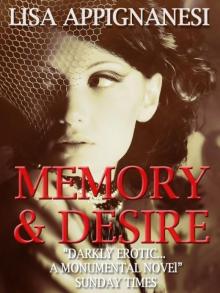 Memory and Desire
Memory and Desire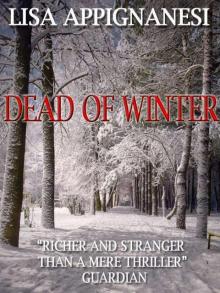 The Dead of Winter
The Dead of Winter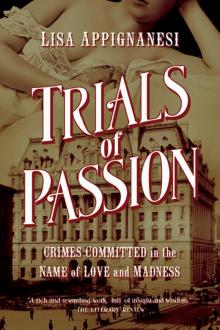 Trials of Passion
Trials of Passion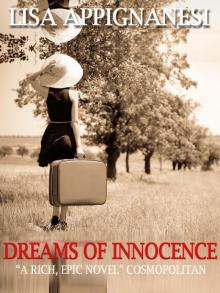 Dreams of Innocence
Dreams of Innocence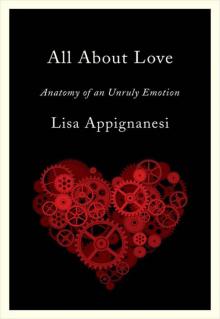 All About Love: Anatomy of an Unruly Emotion
All About Love: Anatomy of an Unruly Emotion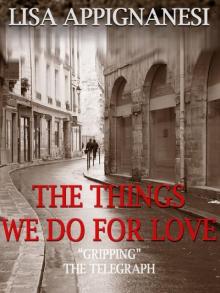 The Things We Do For Love
The Things We Do For Love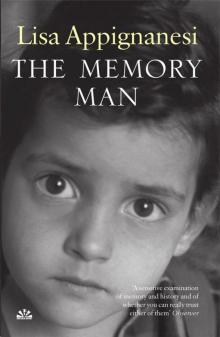 The Memory Man
The Memory Man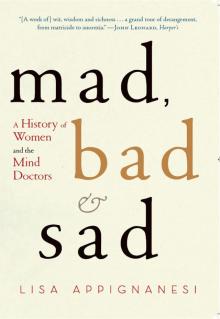 Mad, Bad, and Sad: A History of Women and the Mind Doctors
Mad, Bad, and Sad: A History of Women and the Mind Doctors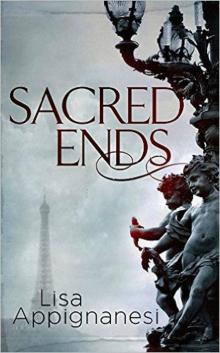 Sacred Ends
Sacred Ends Paris Requiem
Paris Requiem Sanctuary
Sanctuary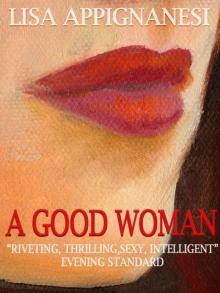 A Good Woman
A Good Woman